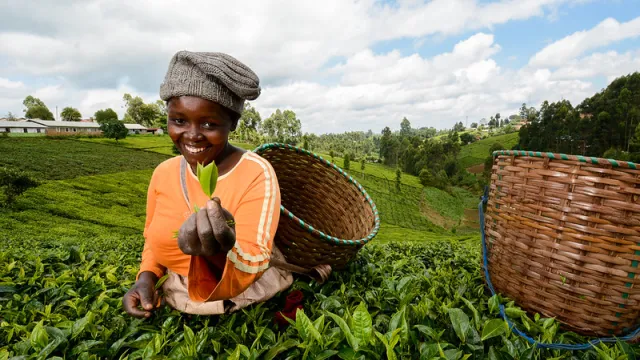Kenya economic growth halves on poor agriculture output

Kenya economic growth halves on poor agriculture output
Maize, wheat milk output fell last year dragging down agriculture growth for the second consecutive year and reducing Kenya’s number one economic sector to just 21.2 percent of gross domestic product (GDP).
Latest Kenya National Bureau of Statistics (KNBS) data shows the economy grew by 4.8 percent in 2022, down from 7.6 percent with only four sectors expanding by double digits compared to seven in 2021.
Maize was the most affected, dropping 34 percent to 150,800 tonnes from 228,400 metric tonnes while marketed wheat dropped by 60,000 tonnes and milk by 47.6 million liters.
Tea production took a marginal hit while coffee, sugarcane and cotton slightly improved although they account for a very marginal proportion of agricultural output.
Maize production, which accounts for about 85 percent of total cereal production in Kenya dropped due to high costs of fertilizer, and poor rainfall distribution. The shortage in production saw maize floor prices shoot up by over 60 percent in 2022.
A devastating drought in Kenya has left close to five million people in dire need of food supplies, with 1.2 million trapped in emergency hunger levels as supplies of common food items thin out, and their prices go beyond the reach of many households.
There are fears that the March-April-May long rains may be less than average in most parts of the country and with an impending El Nino later in the year that could destroy crops and potentially hit the sector again this year.
Read also: In Kenya, ‘Nikw’a ngwete’ famine of dying while holding money unfolds
Treasury Cabinet Secretary Njuguna Ndungu said the government was keen on interventions in the agriculture sector and will continue to provide fertilizer subsidies and correct market failures to increase farmers returns.
The government plan to distribute subsidized fertilizer could result in higher maize yields thereby cooling consumer prices assuming the rains are well spread, especially in Kenya’s food basket counties of Trans Nzoia, Uasin Gishu, Bungoma, Narok, Nakuru, Kakamega, and Nandi.
Kenya opened a window for the importation of 10 million bags of duty-free maize by early August but the initiative has been marred by hurdles following the scarcity of the product in the global markets.
Despite the hit on agriculture, Kenya’s economy continued to grow around the continent and regional average putting the total value of gods and services produced in Kenya at Kes13.3 trillion last year up from Kes12 trillion the previous year.
Kenya’s economy was lifted by accommodation and food services that grew 26.2 percent on recovery of the tourism sector and the financial sector which recorded a 12.8 percent sector growth.
Tourists arrivals crossed over the one million mark for the first time since Covid-19 hit the country with 1.5 million visitors checking in from 871,300 the previous year.
The numbers saw bed occupancy jump from 20 to 23 percent even though available bedspace increased from 27.6 million to 30.4 million.



